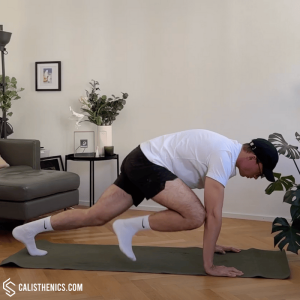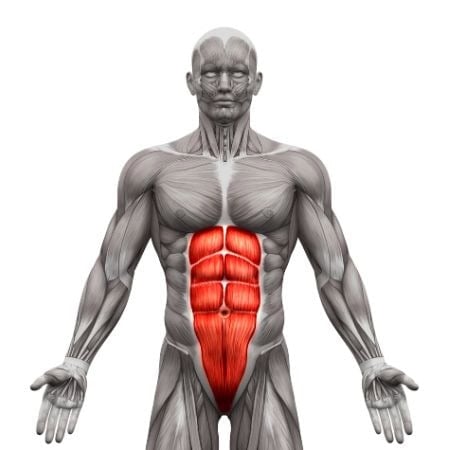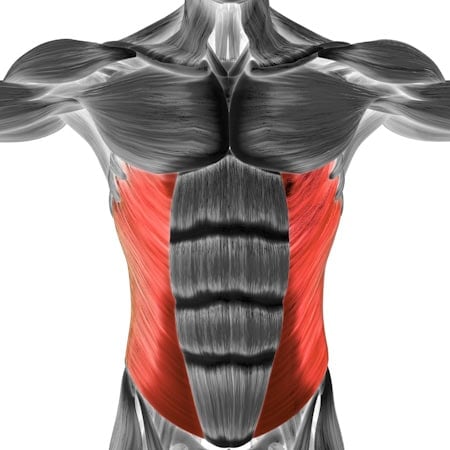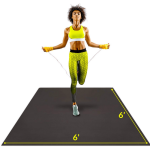Mountain Climbers
How to do Mountain Climbers?
Mountain climbers are a dynamic, full-body exercise that primarily targets the core while also engaging the shoulders, arms, and legs. This movement mimics the climbing motion by quickly driving the knees toward the chest, one at a time, from a plank position. Mountain climbers are excellent for improving cardiovascular endurance, core strength, and coordination, making them a staple in many high-intensity interval training (HIIT) workouts and warm-up routines.
Steps to Perform a Proper Mountain Climber:
1. Set Up in a High Plank Position:
• Begin in a high plank position with your hands directly under your shoulders and your body forming a straight line from head to heels.
• Engage your core by pulling your belly button toward your spine, and keep your hips level to prevent them from sagging or rising too high.
2. Engage the Core and Prepare for the Movement:
• Keep your core tight to stabilize your body. Your shoulders, hips, and feet should be aligned in a straight line.
• Make sure your hands are firmly pressing into the floor, and your arms are straight and engaged.
3. Drive One Knee Toward Your Chest:
• Exhale as you bring your right knee toward your chest in a controlled manner, keeping your core tight and your hips level.
• Avoid rounding your back or letting your hips rise as you bring the knee forward.
4. Switch Legs:
• Quickly switch legs, bringing your left knee toward your chest while extending your right leg back to the starting position.
• Continue to alternate legs in a controlled, fluid motion, maintaining a steady pace.
5. Repeat the Movement:
• Continue alternating legs for the desired number of repetitions or duration, keeping your core tight and your movements controlled throughout.
Benefits of Mountain Climbers
• Improves Core Strength and Stability: Mountain climbers heavily engage the core, improving strength and stability in the abdominals, obliques, and lower back.
• Enhances Cardiovascular Fitness: The continuous, high-intensity nature of mountain climbers provides a cardiovascular workout that improves endurance and burns calories.
• Builds Lower Body Strength: This exercise engages the quadriceps, hip flexors, and glutes, helping to strengthen the lower body muscles and improve agility.
• Increases Shoulder and Upper Body Stability: Holding the plank position requires stability from the shoulders and upper body, making this a good exercise for building upper body endurance.
• Boosts Coordination and Balance: The alternating knee drives and plank position help improve balance, coordination, and proprioception.
• Efficient and Accessible: Mountain climbers require no equipment and can be done anywhere, making them an efficient and accessible exercise for home workouts or warm-ups.
• Great for Full-Body Conditioning: As a full-body exercise, mountain climbers build muscular endurance, improve cardiovascular health, and increase overall fitness.
Common Mistakes to Avoid
• Letting the Hips Rise or Sag: One of the most common mistakes is allowing the hips to lift too high or sag too low. Keep your hips level with your shoulders to maintain proper form.
• Rounding the Back: Avoid rounding your lower back as you bring your knees forward. Engage your core to maintain a neutral spine.
• Using Too Much Momentum: Focus on controlled, deliberate movements rather than rushing through the exercise. Using too much momentum reduces muscle engagement and increases the risk of injury.
• Not Engaging the Core: Failing to engage the core can lead to poor posture and strain in the lower back. Keep your core tight to support proper alignment and stability.
• Allowing the Shoulders to Drift Back: Ensure that your hands remain directly under your shoulders to maintain proper alignment and reduce strain on your wrists and shoulders.
Tips for the proper execution of Mountain Climbers
Core Engagement: Focus on keeping your core engaged throughout the exercise to prevent your hips from rising or sagging.
Controlled Breathing: Breathe steadily as you alternate legs. Exhale as you drive each knee forward, and inhale as you extend each leg back.
Keep the Hips Level: Avoid letting your hips move up or down too much; maintain a level position to keep the focus on your core.
Controlled Speed: Start with a slow, controlled pace to ensure proper form, then gradually increase your speed as you feel more stable.
Hand and Shoulder Alignment: Keep your hands directly under your shoulders to ensure proper alignment and avoid putting excess strain on your wrists.
Muscles worked when doing Mountain Climbers
Primary Muscles:
•Core: The abdominals and obliques are heavily engaged to stabilize the torso and control the knee drives.
•Hip Flexors: These muscles work to bring the knees toward the chest, especially during the quick switching of legs.
Secondary Muscles:
•Shoulders: The deltoids stabilize the upper body and help maintain the plank position.
•Quadriceps: The front of the thighs work to extend and stabilize the legs as they alternate in the climbing motion.
•Glutes: Engaged to stabilize the hips and help control leg movement.
•Calves: Assist in stabilizing the lower body, especially as you alternate legs.
•Lower Back: The erector spinae muscles help maintain a straight, stable spine throughout the movement.
Primary Muscle(s):
Secondary Muscle(s):
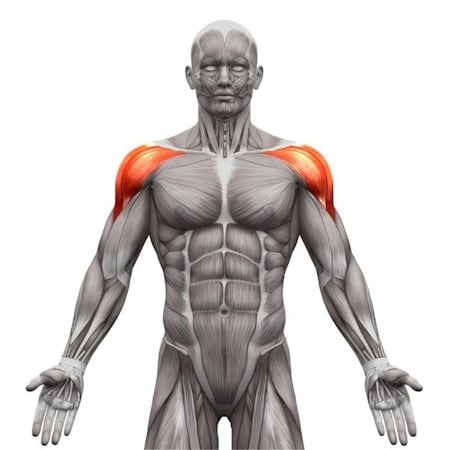
Anterior delt
Adjust the difficulty of Mountain Climbers
How to make Mountain Climbers harder?
How to make Mountain Climbers easier?
How to make Mountain Climbers harder?
To make Mountain Climbers harder:
-
Increase Speed: Gradually increase the speed of the exercise, focusing on quick, controlled knee drives to increase the intensity and cardiovascular challenge.
-
Add a Resistance Band: Place a loop resistance band around your feet or thighs to add resistance, making it more challenging for your core and hip flexors.
-
Perform for a Longer Duration: Extend the length of time (e.g., 45-60 seconds) or increase the number of repetitions to further challenge your endurance.
-
Cross-Body Variation: Instead of driving each knee straight forward, bring each knee toward the opposite elbow to engage the obliques more and increase the core challenge.
How to make Mountain Climbers easier?
To make Mountain Climbers easier:
-
Slow Down the Pace: Perform the movement slowly, bringing each knee forward in a controlled manner to reduce the intensity.
-
Elevate Your Hands: Place your hands on an elevated surface, such as a bench or step, to decrease the load on your shoulders and make it easier to maintain a level plank position.
-
Perform Fewer Repetitions: Start with fewer repetitions (e.g., 10-15 per leg) and gradually increase as your strength and endurance improve.

